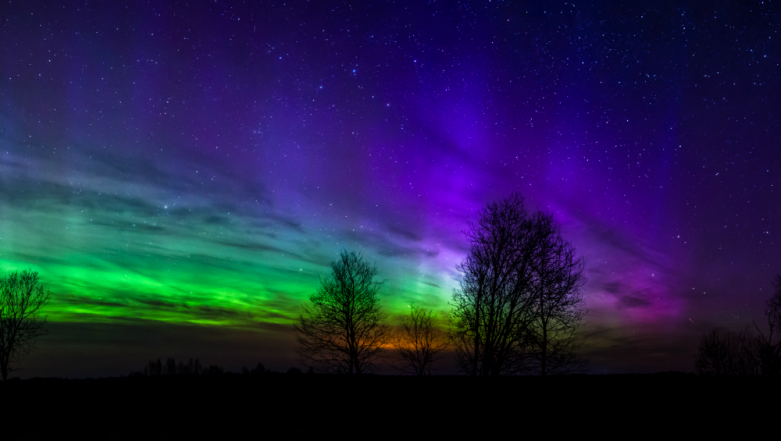Solar Storm Will Hit Earth; Will Solar Flare Impact Earth & How To See The Beautiful Auroras?
According to models, the storm is expected to hit the planet on February 15. Auroras will shine in the sky as the charged particles hit the molecules high in the atmosphere.

A solar storm is on its way to the Earth, as charged particles from the Sun move towards the planet. The Solar Dynamics Observatory Satellite of the National Aeronautics and Space Administration (NASA) captured a solar flare on the sun releasing a Coronal Mass Ejection (CME) between February 11 night and February 12 morning. According to models, the storm is expected to hit the planet on February 15. The administration has further clarified that there is a minor chance that the storm will disrupt the power satellites. Reddish or greenish light—Auroras will shine in the sky as the charged particles hit the molecules high in the atmosphere.
What is a solar flare?
According to NASA, “A solar flare is an intense burst of radiation coming from the release of magnetic energy associated with sunspots. Flares are our solar system’s largest explosive events.” If the storm is strong enough, it will cause a Coronal Mass Ejection (CME) that often follow solar flares and are normally present during a solar eruption; which has happened in this case.
Auroras will shine in the sky
The National Oceanic and Atmospheric Administration (NOAA) was quoted in media reports saying, “Aurora may be visible at high latitudes.” The northern tier of the United States including Northern Michigan and Maine will likely witness this event. The solar storms also known as Geomagnetic storms are ranked on a scale of G at the bottom, R in the middle and S as the most severe. NOAA further added that the forecast calls for a high probability of a G-1 or a ‘minor’ storm, which could strengthen to a G-2 or a ‘moderate’ storm depending on how the stream of particles hit Earth.
How do Solar Storms impact the Earth?
NOAA and NASA monitor the Sun using several telescopes that help to generate weather forecasts by detecting when solar activity occurs. According to the experts, there are variety of things that could happen.
1. The storm could increase the brightness and visibility of auroras which is also known as the Southern or Northern Lights. Those on the west coast of the US may see them.
2. Regions may notice weak power grid fluctuations.
3. Minor impact on satellite operations are possible.
4. Storms of this size can have an affect on the migratory animals in northern regions.
According to NASA, solar storms of this scale occur often, although most do not affect the Earth. The planet’s atmosphere and magnetic field keep us well protected.
(The above story first appeared on LatestLY on Feb 15, 2018 12:33 PM IST. For more news and updates on politics, world, sports, entertainment and lifestyle, log on to our website latestly.com).



